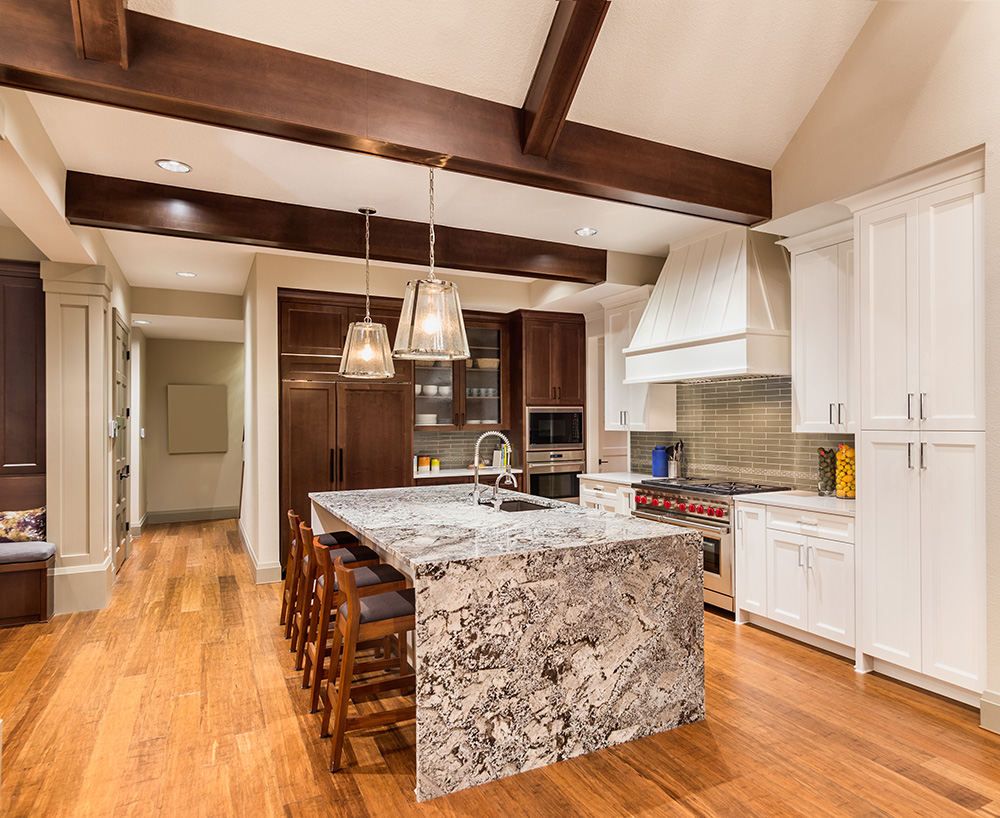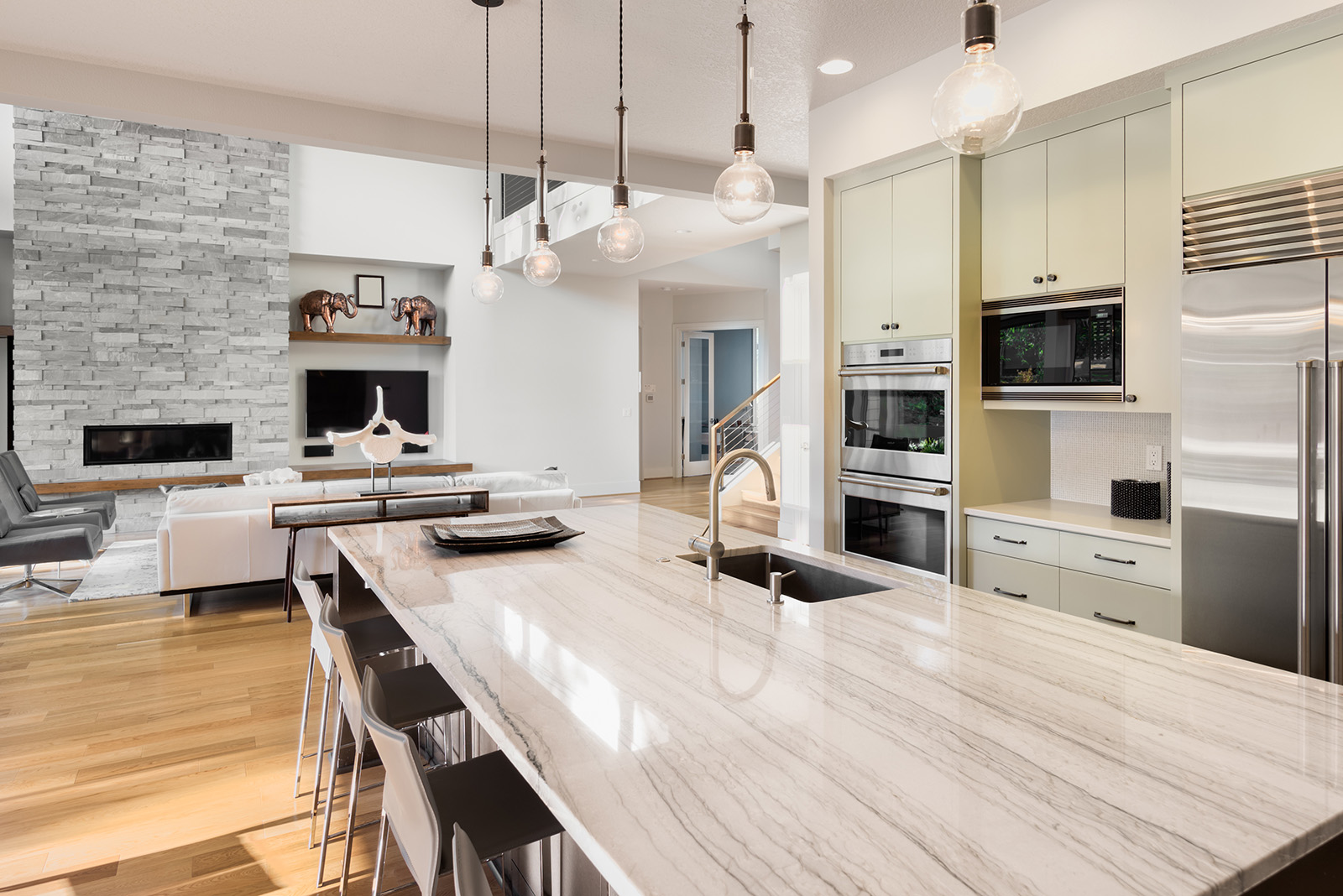
Quartzite is a natural stone that resembles marble in its appearance with soft veining throughout yet the strength and durability of a granite. Quartzites have been in high demand due to their characteristics but because of their rise in popularity they have also been frequently mislabeled. Let’s take a closer look at the properties of quartzites and what makes them standout from other natural stones.
Quartzites: What are they?
Quartzites are natural stones that form by sand being deposited and settling in horizontal layers. These layers undergo pressure that cause the sand, minerals, and water in these layers to cement together and create what is known as sandstone. Quartzite is formed when sandstone undergoes high metamorphic pressure. The high heat and pressure are what make the quartzite strong and durable. There are different types of quartzites. They vary in appearance based on the amount of pressure and heat they’ve undergone. Intermediate quartzite or grainy quartzites will display visible cross bedding which shows the movement of sand and minerals and will have a subtle grainy texture because it has not been exposed to enough pressure. Crystalline quartzites have no cross bedding or grains visible and have a crystalline or glassy texture. This occurs due to the high heat and metamorphic pressure they undergo. The last type of quartzite is one that endures the most intense pressure and temperatures and is called a mixed-stone quartzite. This quartzite will have light colored lenses of pure quartzite with tightly folded layers of dark material usually from other stones.
Also Read: Top Trends for Multifamily Interiors
How do you know if the stone is a quartzite?
There are several ways to determine whether the stone you are looking at is a quartzite. One way is by looking at the texture. If it is sandy or granular it’s most likely a sandstone, but if it has a crystalline and glassy texture it’s a quartzite. Another sign to look for is cross bedding. Cross bedding is repeated curved layers and appear as lines. If cross bedding is seen this does not mean the stone is not a quartzite but could be a sign that the stone has not been highly metamorphosed. It can lead to a stone that has a higher porosity. Testing the porosity of the stone will help determine if the stone is a quartzite or a sandstone. Quartzites have a low porosity due to the amount of pressure they’ve undergone. When it comes to determining the difference between marble and quartzites it is not possible to visually tell the difference that is when a porosity test can help determine what stone you have.
What’s the appeal of quartzites
Quartzites have become very popular due to their strength and appearance. They have gorgeous veining like a marble but are either as strong or stronger than granite. This is great for multifamily properties that want a more elevated look with a stone that is durable enough to handle a lot of activity and wear. Quartzites also have a low porosity and will not etch from acids like lemon juice or vinegar which make them a perfect addition to any kitchen.
At Republic Elite we offer four quartzites that can take your multifamily units to the next level. Browse our website republicelite.com to view our quartzite selections.



